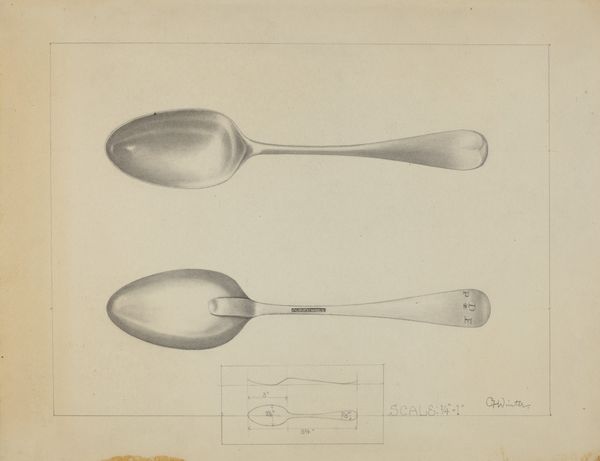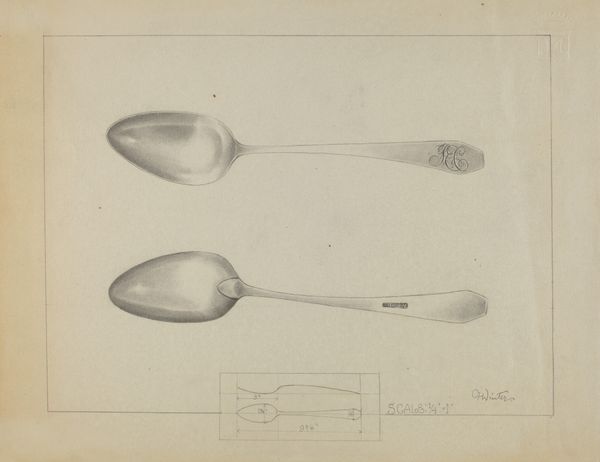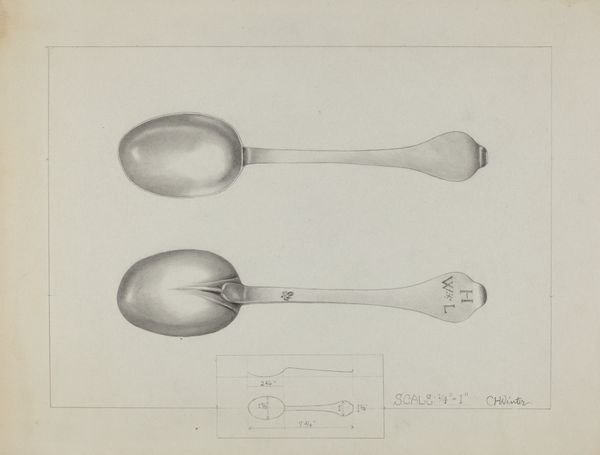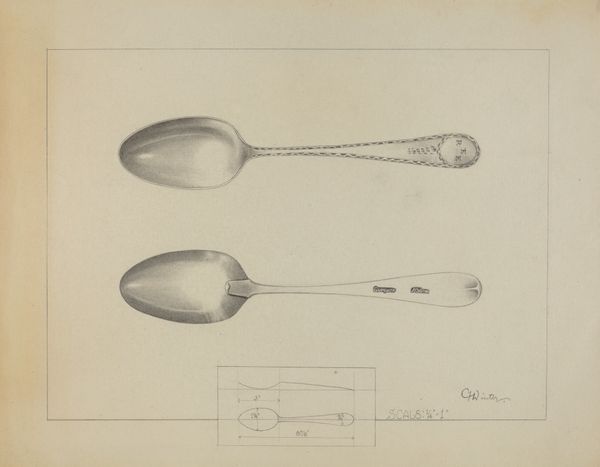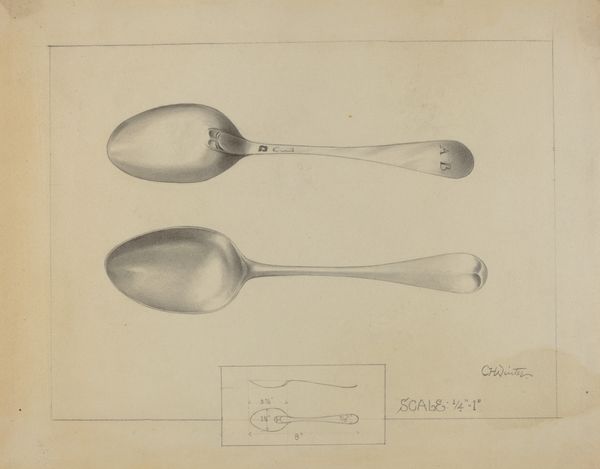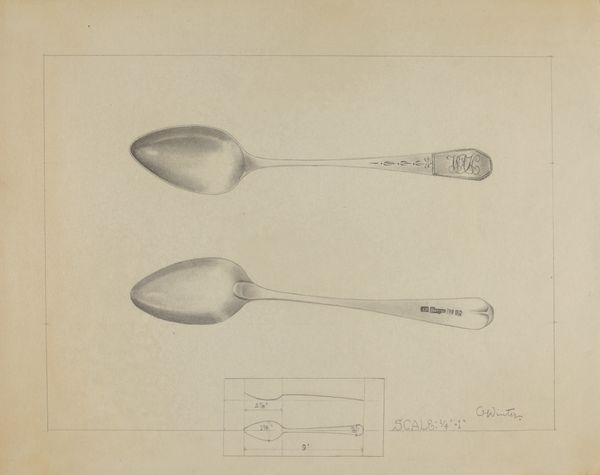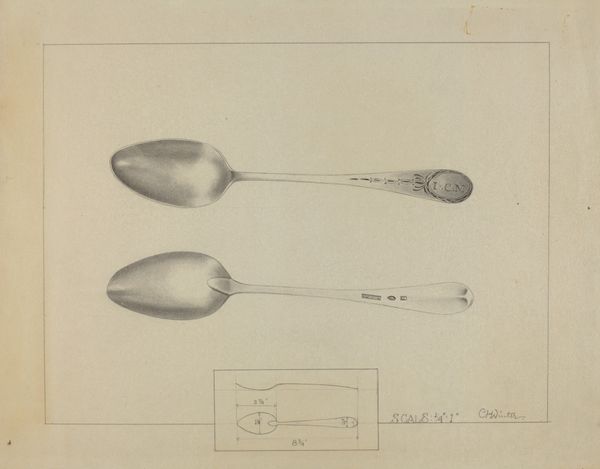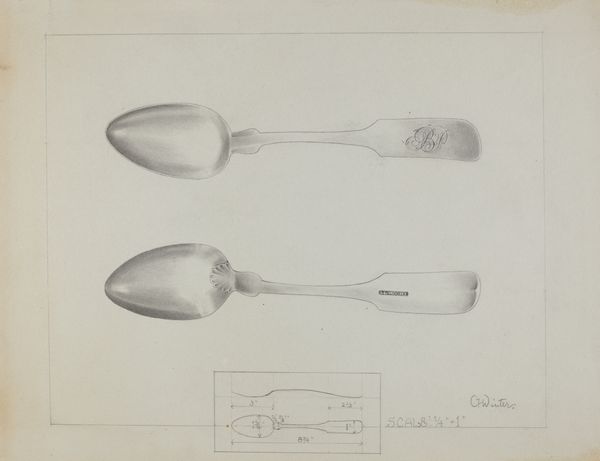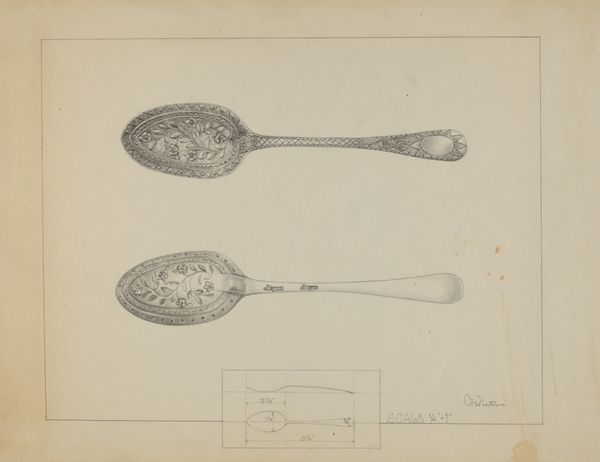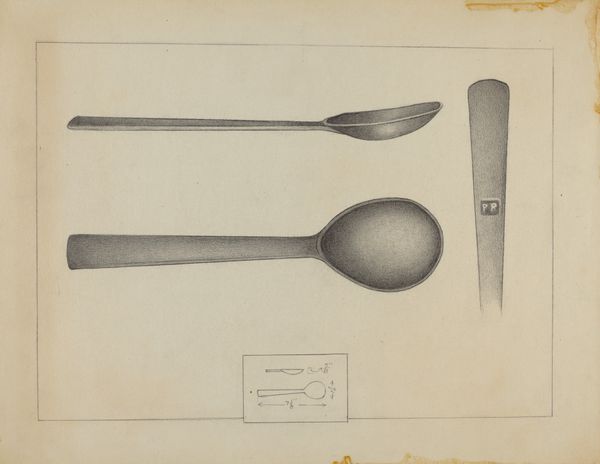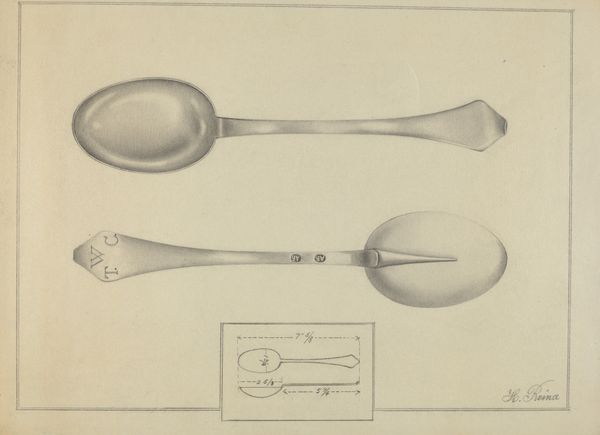
drawing, pencil, graphite
#
pencil drawn
#
drawing
#
charcoal drawing
#
pencil drawing
#
pencil
#
graphite
#
pencil work
#
academic-art
Dimensions: overall: 21.6 x 28.3 cm (8 1/2 x 11 1/8 in.) Original IAD Object: 7 5/8" long; 1 5/8" wide
Copyright: National Gallery of Art: CC0 1.0
Curator: Here we have Charlotte Winter’s “Silver Spoon,” created around 1936. It’s a pencil drawing, almost architectural in its precision. Editor: It feels ghostly, doesn't it? Like a memory. These gleaming spoons, suspended in quiet grayness… Were they a loved possession, rendered as an act of devotion? Curator: It’s tempting to romanticize it, but let's look at the context. This meticulous rendering—notice the inclusion of precise scale measurements. These were likely technical drawings done for manufacturing purposes, perhaps as blueprints for silverware production. Editor: Blueprints! Of course! Suddenly the rigid outline makes so much sense. Still, the graphite achieves a lusciousness I didn't expect; it lends them a real sense of weight, a physical presence that belies its purely functional purpose. Curator: The inherent tension between art and industry. Mass production relied heavily on drawings like these; skilled hands translating designs into tangible commodities for an emerging consumer market. Labor became intricately tied to design and representation. Editor: I see it! There's an intimacy in its rendering; those gentle gradients communicate so much about its form. This wasn't some sterile Xerox copy - someone took great care observing, handling. Now I’m thinking of who would eat from these spoons, a time when such objects embodied dignity, a symbol of domestic refinement, you know? Curator: Right, so design encompasses more than sheer functional purpose, and consider that the drawings of commodities might, over time, transform themselves into venerated museum artworks. Editor: Remarkable. What started as a template became, in the end, an artifact about so much more than simply 'utensils.' Curator: A tangible reflection of design history and commodity culture during its transition, a unique confluence of artistry, materiality, and everyday utility, a lasting and important historical mark. Editor: Beautifully put. It seems what once appeared utilitarian now sings a melancholic song. A quiet reminder that objects are just brimming with unseen histories and human aspirations, transformed simply with how they are shown.
Comments
No comments
Be the first to comment and join the conversation on the ultimate creative platform.
